Calcium carbide is one of my favourite chemicals – with it you can produce ethyne (acetylene) anywhere, just add water! An exploration of ethyne's properties is essential at key stage 5 (16+) when introducing alkynes and it's fantastic for demonstrating incomplete combustion when discussing the issues with burning fuels at any age. Of course, if you have a fuel you will want to show how the energy released from its combustion can be put to good use.
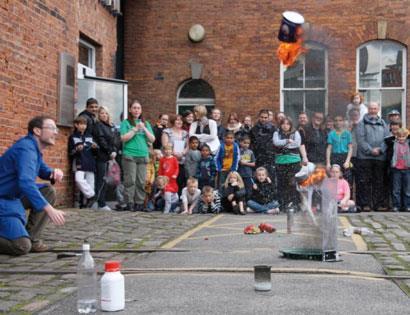
Kit
- Calcium carbide chips (<10 mm, highly flammable)
- 250 cm3 beaker
- 200 g powdered food can1 (eg custard or skimmed milk)
- modified piezo-electric gas lighter2
- plastic tray
- 50 cm3 plastic beaker
- Safety screens
- Eye protection
Health and safety
- Audience and demonstrator should wear eye protection. If you get calcium carbide on the skin, wash off with plenty of water.
- Replace the lid on the calcium carbide container immediately after removing the chips.
- If you have a metal tin of calcium carbide which requires you to lever it open, do not use a metal lever as any spark could ignite acetylene gas that may have build up inside.
- Do not use glass beakers in place of a plastic one inside the food can.
- Never replace the air with oxygen – this will result in a damaging explosion.
- Note: this demonstration is not covered by the model risk assessments in common use. A special risk assessment is required: Members should contact CLEAPSS or (in Scotland) SSERC.
Preparation
To show this energy being harnessed, the fuel can be ignited in a small food can with a volume of approximately 600 cm3. Place the plastic lid of the pot upside down in a tray (to contain any spilt liquid). There should be a safety screen and 2 metres space between the audience and the tray and another to protect the demonstrator. The tray itself can be on the desk if you have adequate ceiling clearance but if the room is less than 4 metres high do the demonstration on the floor. Place a 50 cm3 plastic beaker containing 20 cm3 of water on the lid.
Bore a small hole (<10 mm) large enough to pass through the contacts from a modified piezo-electric gas lighter approximately 10 mm from the base of the can. With your contacts ready, measure 5 chips (approx 0.6 g) of calcium carbide into a dry weighing boat and replace the lid on the calcium carbide pot.
In front of the audience
Begin by showing the audience that a gas is produced when calcium carbide is added to water. A few chips in the bottom of a beaker will produce bubbles which can be lit on the surface of the liquid, often producing a dull report. The ethyne will burn with a yellow flame and produce plenty of soot.
Return to your food can. Ensure your contacts are true within the can and they are sparking. Short out the contacts against the metal of the body to avoid premature sparking. Place the calcium carbide chips in the water and invert the food can over its lid (and the water/calcium carbide) to collect some gas. Retreat with your piezo electric lighter to a distance of 2 metres and after 6 seconds ignite the fuel mixture. A flash and report will follow and the food can will be launched up to 3 metres in the air.
Teaching goal
At key stage 3 (11+) and key stage 4 (14+) this is a good demonstration to show that useful energy transfers can be obtained from chemical reactions and for showing the products of incomplete combustion. This is returned to in key stage 5 (16+) where students should be able to provide their own balanced equations for the possible incomplete combustion occurring, eg:
3C2 H2 + 4O2→ 2C + 3CO + CO2 + 3H2 O
Alternative methods
This experiment scales well. A larger (catering-sized) cardboard food can works well (a 2 kg hot chocolate can is pictured). Here a thin plastic coleslaw pot was used for the reaction mixture and instead of placing a lid on the can it was inverted in a shallow tray of water. At this scale, lids will often fail during the explosion. 20 chips (approx. 2.3 g) were placed in the coleslaw pot and the acetylene was left to collect for 45 seconds. Anything larger than a custard pot should be demonstrated outside.
Larger can sizes than this can be unpredictable and involve long waits to reach an explosive mixture.
Further reading
Some of the chemistry of ethyne has been discussed in a previous exhibition chemistry article: making ethyne.
Notes
- Although this demonstration will work with a range of vessels, a food can with mostly cardboard construction, metal base and a plastic lid is particularly suitable as it is light. This will allow it to safely pop high into the air and present minimum hazard if it fails during the explosion.
- Instructions on how to construct one of these are on Learn Chemistry: a hydrogen powered rocket



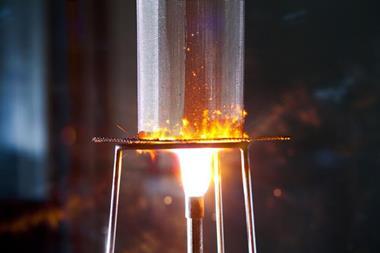
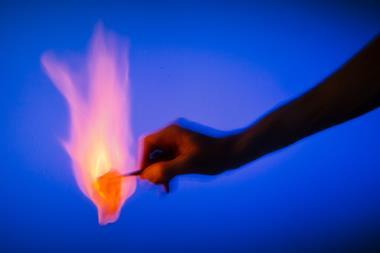
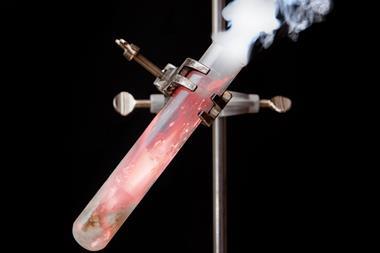
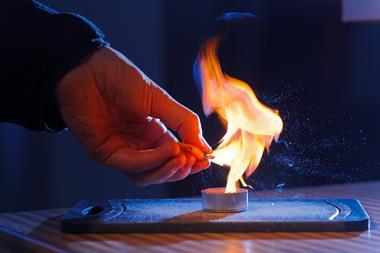

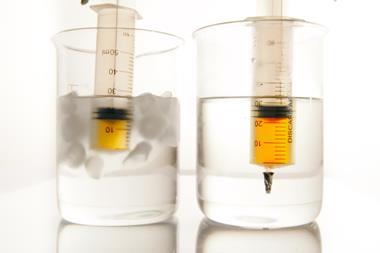
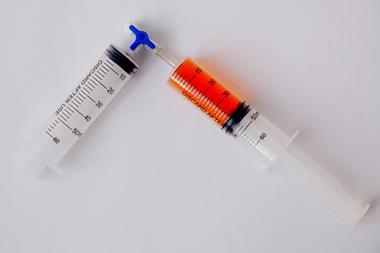

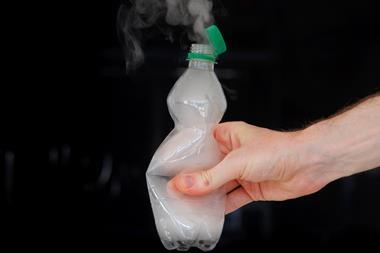
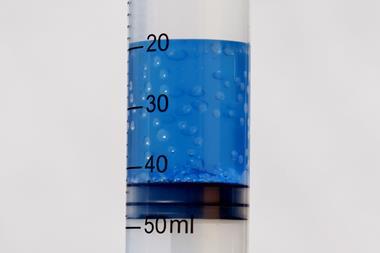







No comments yet